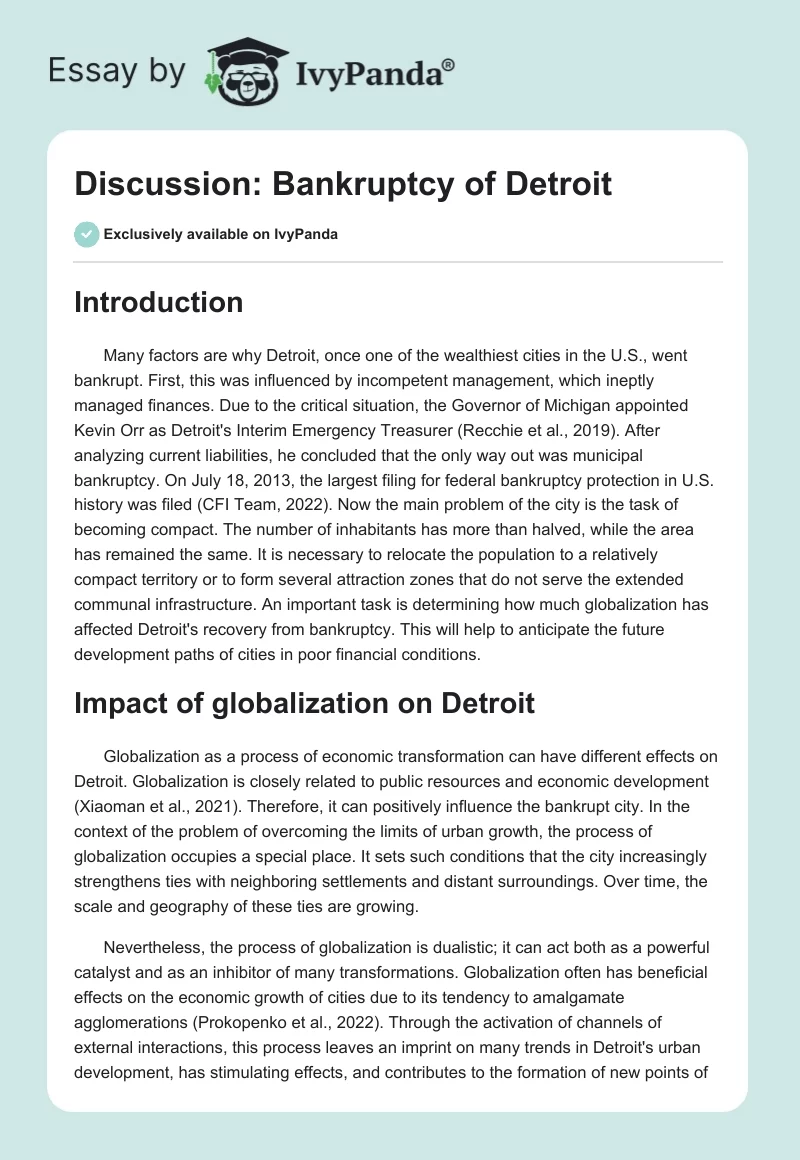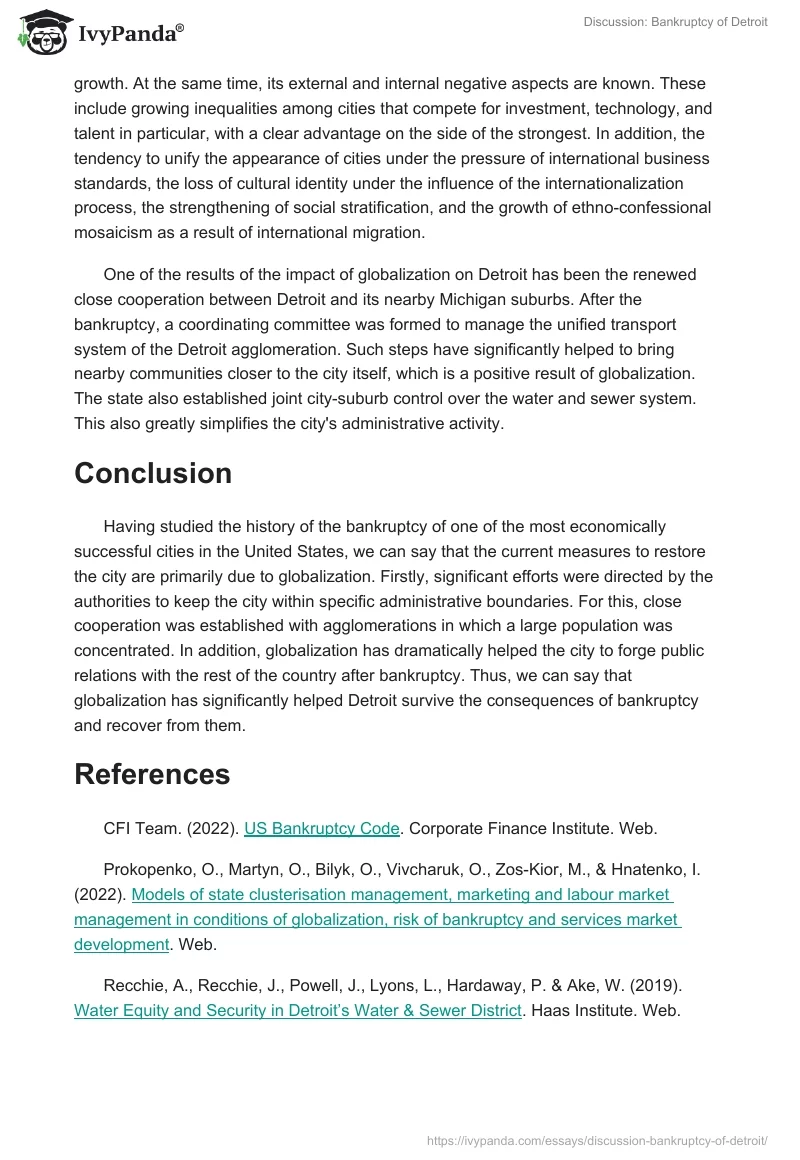Introduction
Many factors are why Detroit, once one of the wealthiest cities in the U.S., went bankrupt. First, this was influenced by incompetent management, which ineptly managed finances. Due to the critical situation, the Governor of Michigan appointed Kevin Orr as Detroit’s Interim Emergency Treasurer (Recchie et al., 2019). After analyzing current liabilities, he concluded that the only way out was municipal bankruptcy. On July 18, 2013, the largest filing for federal bankruptcy protection in U.S. history was filed (CFI Team, 2022). Now the main problem of the city is the task of becoming compact. The number of inhabitants has more than halved, while the area has remained the same. It is necessary to relocate the population to a relatively compact territory or to form several attraction zones that do not serve the extended communal infrastructure. An important task is determining how much globalization has affected Detroit’s recovery from bankruptcy. This will help to anticipate the future development paths of cities in poor financial conditions.
Impact of globalization on Detroit
Globalization as a process of economic transformation can have different effects on Detroit. Globalization is closely related to public resources and economic development (Xiaoman et al., 2021). Therefore, it can positively influence the bankrupt city. In the context of the problem of overcoming the limits of urban growth, the process of globalization occupies a special place. It sets such conditions that the city increasingly strengthens ties with neighboring settlements and distant surroundings. Over time, the scale and geography of these ties are growing.
Nevertheless, the process of globalization is dualistic; it can act both as a powerful catalyst and as an inhibitor of many transformations. Globalization often has beneficial effects on the economic growth of cities due to its tendency to amalgamate agglomerations (Prokopenko et al., 2022). Through the activation of channels of external interactions, this process leaves an imprint on many trends in Detroit’s urban development, has stimulating effects, and contributes to the formation of new points of growth. At the same time, its external and internal negative aspects are known. These include growing inequalities among cities that compete for investment, technology, and talent in particular, with a clear advantage on the side of the strongest. In addition, the tendency to unify the appearance of cities under the pressure of international business standards, the loss of cultural identity under the influence of the internationalization process, the strengthening of social stratification, and the growth of ethno-confessional mosaicism as a result of international migration.
One of the results of the impact of globalization on Detroit has been the renewed close cooperation between Detroit and its nearby Michigan suburbs. After the bankruptcy, a coordinating committee was formed to manage the unified transport system of the Detroit agglomeration. Such steps have significantly helped to bring nearby communities closer to the city itself, which is a positive result of globalization. The state also established joint city-suburb control over the water and sewer system. This also greatly simplifies the city’s administrative activity.
Conclusion
Having studied the history of the bankruptcy of one of the most economically successful cities in the United States, we can say that the current measures to restore the city are primarily due to globalization. Firstly, significant efforts were directed by the authorities to keep the city within specific administrative boundaries. For this, close cooperation was established with agglomerations in which a large population was concentrated. In addition, globalization has dramatically helped the city to forge public relations with the rest of the country after bankruptcy. Thus, we can say that globalization has significantly helped Detroit survive the consequences of bankruptcy and recover from them.
References
CFI Team. (2022). US Bankruptcy Code. Corporate Finance Institute. Web.
Prokopenko, O., Martyn, O., Bilyk, O., Vivcharuk, O., Zos-Kior, M., & Hnatenko, I. (2022). Models of state clusterisation management, marketing and labour market management in conditions of globalization, risk of bankruptcy and services market development. Web.
Recchie, A., Recchie, J., Powell, J., Lyons, L., Hardaway, P. & Ake, W. (2019). Water Equity and Security in Detroit’s Water & Sewer District. Haas Institute. Web.
Xiaoman, W., Majeed, A., Vasbieva, D. G., Yameogo, C. E. W., & Hussain, N. (2021). Natural resources abundance, economic globalization, and carbon emissions: Advancing sustainable development agenda. Sustainable development, 29(5), 1037-1048. Web.


